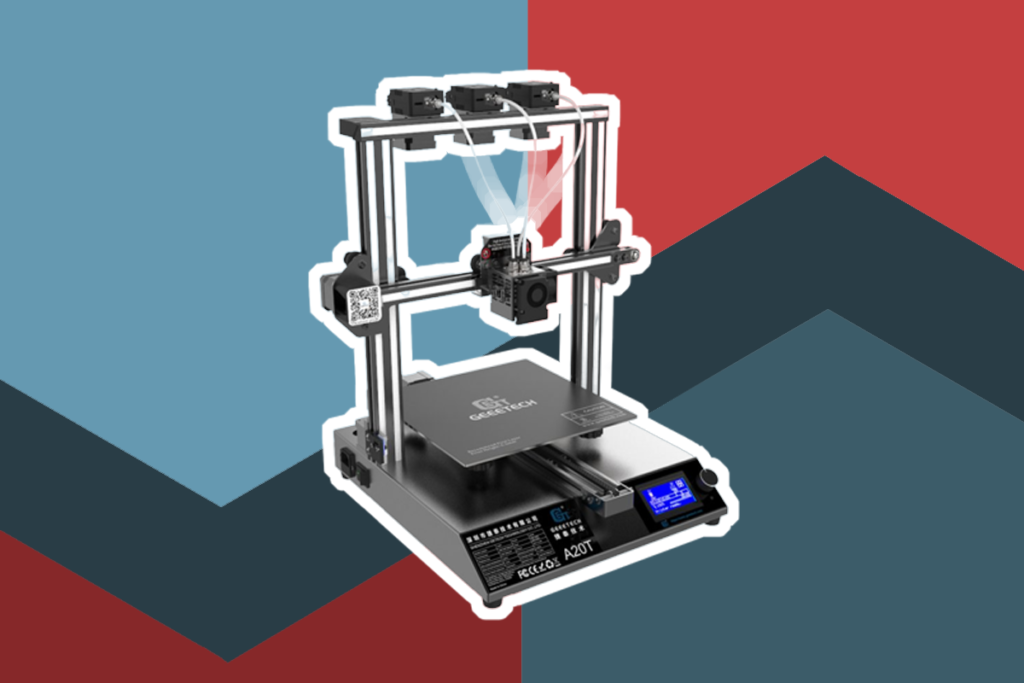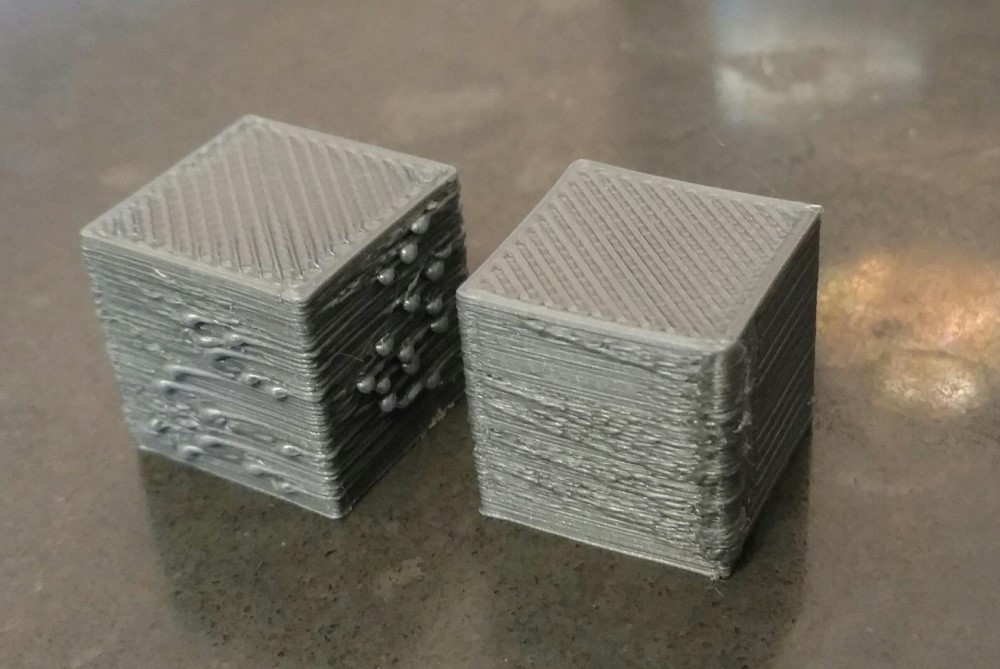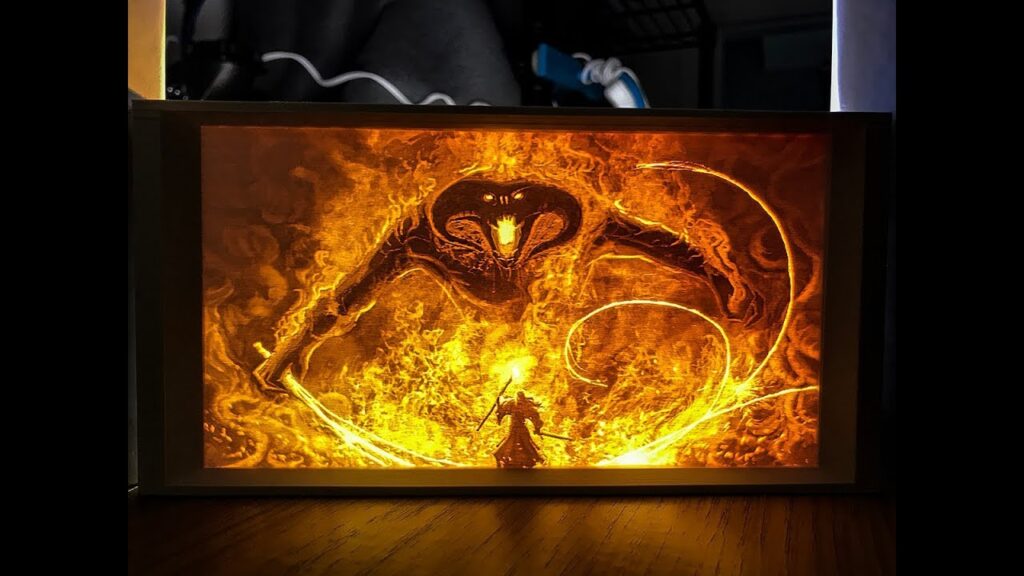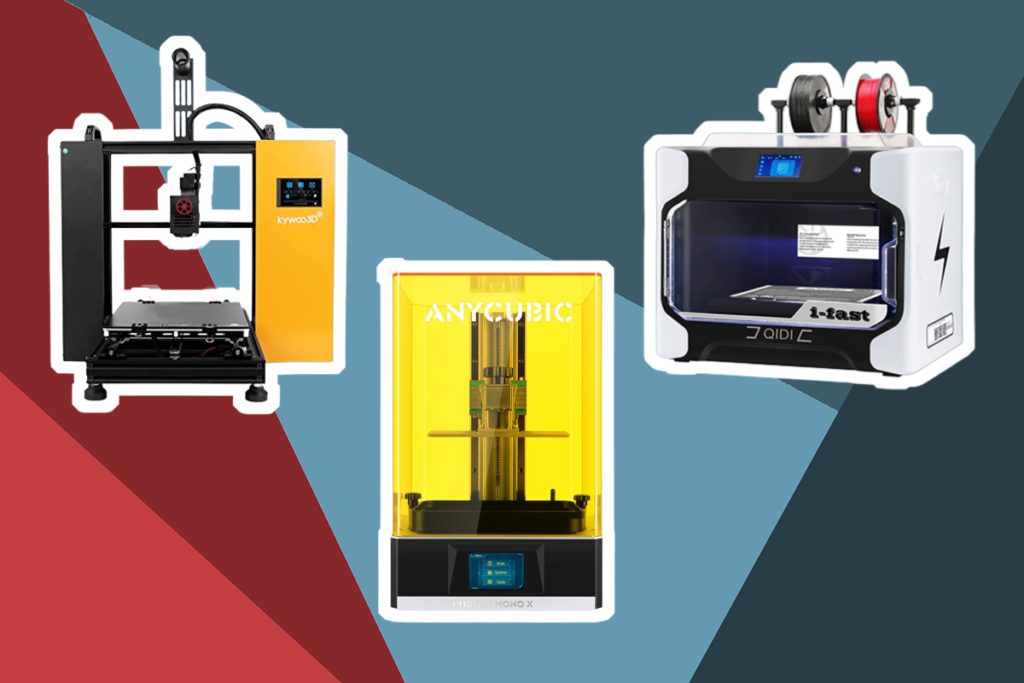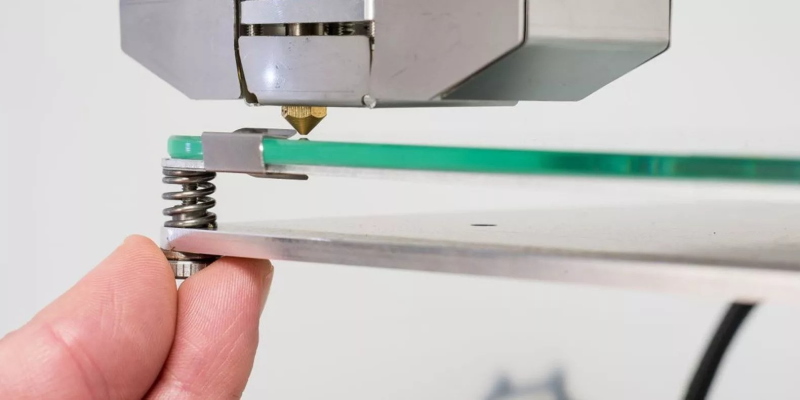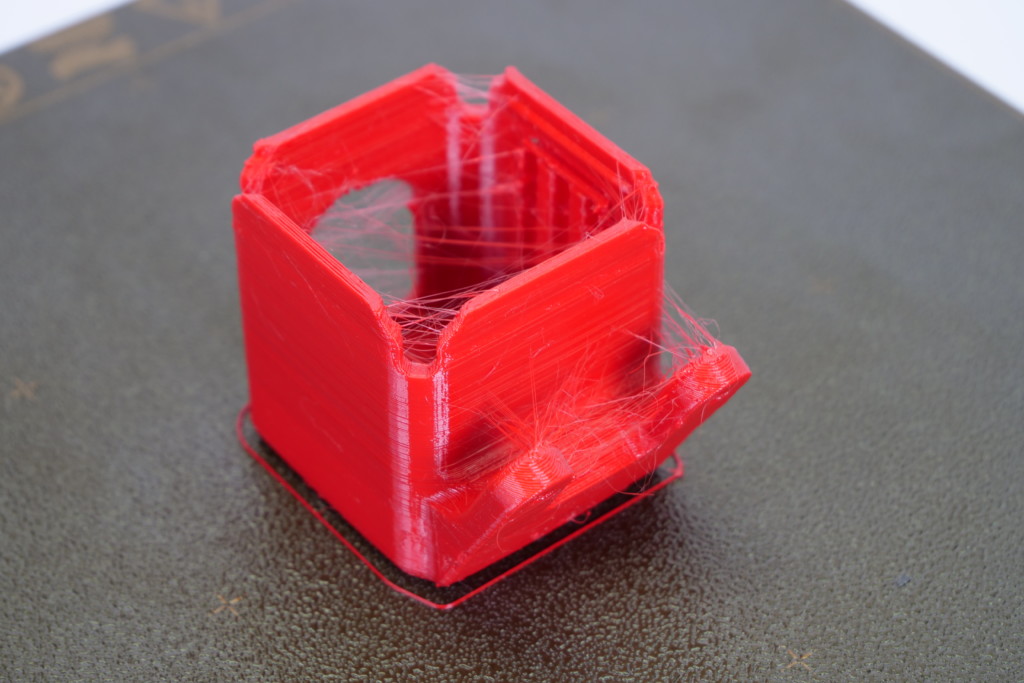

Are you looking to 3D print a nylon model? Well, you will certainly need the best 3D printer in the market for quality parts and the best user experience. Nylon is one of those filaments that are designed to give users a next-level 3D printing experience. The material is versatile and has added advantages over PETG, PLA, and ABS. Some pros include flexibility, high layer resolution, low friction coefficient, high melting temperature, and high tensile strength. Because of these advantages, nylon can be used in parts that move against each other such as gears. These advantages are non-existent if you do not own the best nylon 3D printer that can build quality models.
Fortunately, we have done all the research for you. We bought some of the highly recommended nylon printers on the market and reviewed them considerably. In our nylon 3d printer reviews and tests, we had an eye for details like automatic bed leveling, Z-axis structure, software version, dual extrusion system, heated beds, and much more. We especially liked our Editor’s Choice QIDI TEC X-Plus.
More features: double Z-axis driver, latest slicer software version, removable plate
The first nylon 3d printer on our list of favorites is the RQIDI Technology 3D printer. It is an enormous premium 3D printer with an enclosed room that produces excellent quality printouts. The machine is a product of R Qidi Technology, a Chinese firm specializing in developing high-quality, high-performance 3D printers. The company has been in operation for over six years. So you can count on them for excellent quality and smooth running machines.
The Qidi Tech X-Plus printer is best suited for 3D model enthusiasts and medium to low industrial production. For you to use the machine, you only need a little knowledge of 3D printing. Everything else is covered in the printer manual, right from assembly to usage. X-Plus is also equipped with state-of-the-art slicer software that makes your printing experience more exciting. The manufacturer claims that the software improves your print quality by 30% and speed by up to 20%.
More features: dual extruder, QIDI slicing software, heated chamber, dual Z-axis structure
Another great option for 3D printing nylon is the R Qidi Technology i-Fast 3D printer. The machine is named so because of its speed. It features the best filament versatile, quick printing speeds, and professional building results. i-Fast also has an enormous print volume, heated bed, dual extruders, and industrial-grade body hardware.
The i-Fast printer is the lasted offering from Qidi Technologies. The machine is the most extensive and most expensive printer produced by the company to date. I-Fast succeeded the i-mates model, which is a bit smaller in size and has lesser features. The latter has a single X-axis and extruder. On the other hand, i-Fast has two Z-axis drivers and extruders. Both models use fixed deposition modeling technology to print. However, i-Fast prints at a much faster pace, just as its name suggests.
More features: 5-inch full-color touch screen, easily removable glass build plate, built-in HD camera, a heated build plate
Dremel 3D45-01 is a feature-packed printer that can produce accurate prints. It comes loaded with powerful leveling software. The machine can also handle advanced materials that require high temperatures, such as EcoABS, polycarbonate, and, of course, nylon. It also includes a removable building platform which offers a maximum of 6.7 x 10 x 6 inches build volume.
Depending on your needs and wants, the Dremel 3D45-01 might be a fair, excellent, or limited 3D printer. If you plan to stay within its specified ecosystem and operating settings, it is a great machine that offers safety and reliability. But once you stray outside the manufacturer’s recommendations and proprietary boundaries, the printer’s capabilities take a nosedive. Generally, the machine is beginner-friendly and easy to set up. It is equipped with a color touchscreen containing intuitive icons for operation.
More features: heated removable glass, fully enclosed, auto power-off, built-in filament run-out detection
The WEEDO F152S is another best 3d printer for nylon that supports various filaments such as PLA, ABS, TPU, and PC. It features a removable heated glass bed, an auto power-off feature, built-in run-out detection for filament, and automatic bed leveling. The model can handle large 3D printouts with its 200 x 185 x 195 build volume.
The F152S printer is best suited for 3D printing novices. For starters, it doesn’t require assembly. It also comes with a wizard start-up interface that will help you familiarize yourself with its controls. Other beginner-friendly features in the printer include automatic leveling, a 4.3-inch color touchscreen, resumption function after a blackout, and filament runout auto-detection. Each interface in the machine has a ‘Help’ icon which makes it easy for beginners to learn the machine’s functionality quickly. The Error Diagnosis and FAQ features will come in handy when resolving errors. WEEDO tech support team can be reached at any time if you face issues with your printer.
More features: 5-inch touchscreen, precise printing, dual Z-axis
The last best nylon 3d printer on our favorites list is the Junco Intelligent Industrial Grade 3d Printer. The machine has a build volume of 300 x 250 x 300 millimeters, and it can print using nylon PC, Carbon fiber, Polyurethane, Polylactic Acid, Metal, Plastic, and many other filaments.
This machine is ideal for those who want to get into industrial 3D printing. Its unique features include a powerful heating system, an advanced cooling system, and a high-quality print head. The machine also has a single extruder, a double-sided print head, and a dual Z-axis driver. It also comes with an integrated vacuum pump that helps reduce the amount of dust generated by the printer. It is also best suited for professionals looking for a reliable, durable, and efficient 3D printer for industrial applications and home, hobby, education, design, and engineering uses.
Have you ever dreamed of owning a 3D printer? Maybe you’ve tried to find one, but the prices are too high. Or perhaps you bought an affordable printer, but it didn’t meet all of your requirements. It can be hard to find the perfect 3D nylon printer for your needs without doing hours and hours of research or spending thousands on trial and error. That’s why we created this section – to help make purchasing easier.
Before we get into the buying guide, let’s talk about why you need a nylon printer. There are many reasons that people choose to purchase this type of machine over others on the market. We have come up with some of our favorites!
Most nylon printers produce high-quality printouts. They are fitted with automation software that guarantees you a 30% more quality product than traditional machines.
Also, objects built with nylon filament are good-looking. The material itself has a beautiful composition, and when printed, it comes out with a smooth glossy finish. Because of this feature, the prints produced from nylon printers are more aesthetically pleasing overall.
Nylon is also a solid material with excellent durability. The filament also has a low friction coefficient Trusted Source The frictional properties of nylon - ScienceDirect The coefficient of friction of nylon is measured with increasing load over a wide range of sliding speeds. It is found that, at a comparatively high speed, the coefficient of friction reaches a maximum of 1.0–2.0. The value of the maximum and the load at which it is reached vary with the sliding speed, the roughness of the surfaces, the ambient temperature and the contacting materials. www.sciencedirect.com , so it holds up well against wear and tear. Because of this, the objects you print in nylon can be used for many different applications.
The material also has high impact resistance and durability. It is the best filament in situations where the printout will constantly be banging with other objects.
There’s no limit to what you could print in a nylon printer. Whether you want to build prototypes for projects, parts for machines, and even replacement pieces, the printer can do it all.
Most nylon printers are also compatible with other filaments such as ABS, PLA, PETG, etc. If you buy the machine, you don’t need to go back to the market to print models with different materials.
Nylon printers come with a detailed manual for beginners to learn their interface. They also have a touchscreen functionality that makes it easy to give commands to the machine. Various automation features are installed in high-end models to reduce your interaction with the printer.
There are several essential features that we feel need to be considered. These factors should be taken into account before and not after making purchase decisions.
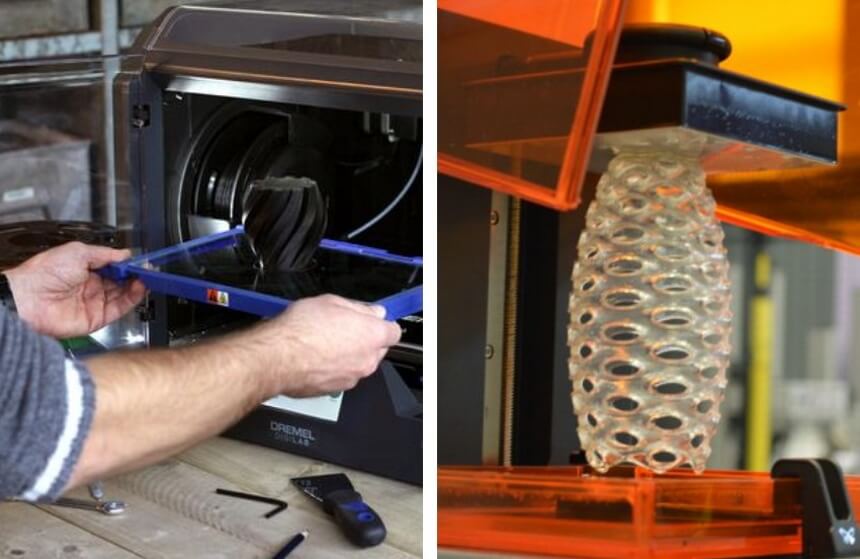
The first thing you should consider when purchasing a nylon printer is the technology it uses. There are two main types of printing technologies: FDM and DLP/SLA.
FDM technology is used in most of the printers on the market today. It works by melting plastic pellets and then depositing them layer by layer onto a heated bed. This process allows for precise prints.
FDM printers tend to produce large amounts of heat, which may cause warping and distortion of the printed object.
DLP/SLA technology uses a liquid photopolymer resin filament which becomes a solid when exposed to UV light. DPL/SLA printers have UV projectors that produce lasers to solidify the resin liquid. This technology can print a resolution of as low as 25microns. Its final printout has a smooth and tender surface.
If you want to print jewelry and items that need a smooth finish, then DLP/SLA technology printers will fit you. They, however, do not use nylon filament but rather a liquid resin photopolymer material. If you intend to use nylon, then FDM machines are the best suited for you. All printers listed in this guide use FDM technology.
Aside from that, you should also check for the AI features of the machine you are buying. It would be best if you had a printer that reduces your work by automating most tasks. For this, we recommend purchasing the Dremel 3D45-01 DigiLab 3D45 3D Printer reviewed above.
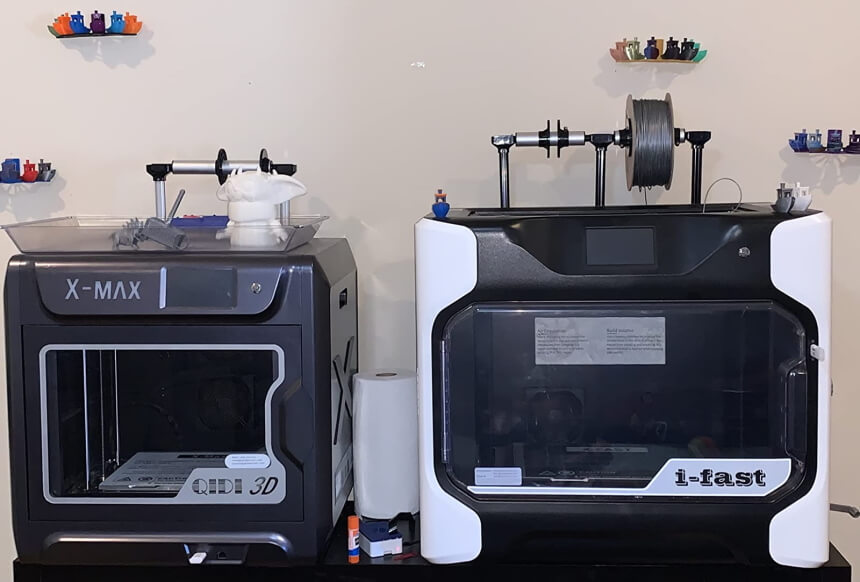
Another factor to consider is its build volume. It is the total volume of space that a model can be made within the printer’s confines. The factor will tell you the maximum height, width, and length your printout can be.
So, before buying any printer, consider the maximum size of the 3D models you will be building. Do not purchase a machine with a 7 x 7 x 7-inch build volume while your most enormous length or height is 12 inches. Also, you do not want to buy a machine with a bigger space than you will be handling. A printer with a large build volume costs more. You will have wasted your money on a bigger space that you will never use.
Nonetheless, we recommend getting a printer with the most extensive build volume around. You never know if one day you might need to build something big. If you are a jewelry artist, going for the most voluminous printer available in the market is non-negotiable. Jewelry requires a lot of space to accommodate all its intricate designs. The best 3D machine with the highest build volume in our listing is the R QIDI TECHNOLOGY i Fast 3D printer.
You should also consider whether the printer you are buying is compatible with your chosen materials. On top of nylon, you might want to use other filaments such as metal, resin, ABS, PLA, PETG, carbon fiber, and so forth.
If you are not sure about the materials you will be using, go for the model compatible with the most filaments.
If you are the kind of person who travels a lot, the size your printer occupies is essential. Other factors such as its weight are also important. You do not want to be carrying a bulky model around when going to shows, seminars, or a friend’s house. However, be advised that smaller printers build small printouts.
On the other hand, if you intend to install your printer permanently, we recommend going big. A giant machine will be able to handle any size of the design you want to build. For this, we recommend the R QIDI TECHNOLOGY i Fast 3D Printer reviewed in this guide. For a smaller and lighter model, go for the WEEDO F152S 3D Printer, with a build volume of 200 x 185 x 195 mm.
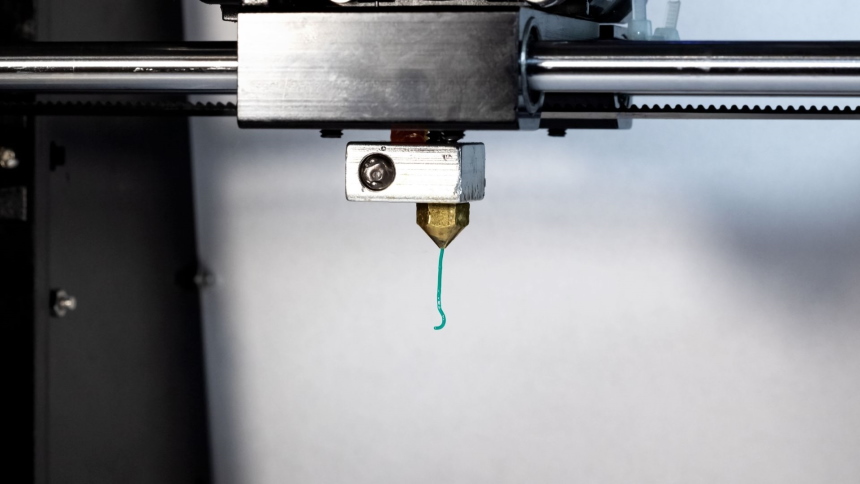
Smaller nozzles, on the other hand, build smaller printouts but with minor details. So, it depends on what you prefer.
We recommend choosing a nozzle between 0.4mm and 0.6mm. This range produces good quality prints without compromising on size. You should also go for a printer with AI and other added features incorporated in the nozzle to make printing easier. Some of these add-ons include a dual Z-axis driver, dual extruder, slicing software, and so forth. For this, we recommend the R QIDI TECHNOLOGY 3D Printer reviewed above.
Another factor to consider is the layer thickness. Layer thickness refers to the number of layers used to create each part of your model. It is measured in micrometers. Generally speaking, the smaller they are, the better the print quality. But there is a limit. Too small layers can result in warping.
For nylon, we recommend going for a printer that can handle layer thicknesses of 0.1 to 0.3 µm. This range gives you the best balance between quality and durability. The best 3D printer for smaller layer heights is the R QIDI TECHNOLOGY i Fast 3D Printer covered above.
If you need something simple, you may find that PLA works better for you. Here are some scenarios where nylon is best for:
The printers in this listing are the ideal machines for printing nylon models. They offer excellent performance, build speed, and reliability. With these printers, you will be able to make superb prints without worrying about the quality.
For our Editor’s Choice, we settled for the R QIDI TECHNOLOGY 3D Printer, and it offers the best filament compatibility. The machine can work with ABS, PC, Carbon Fiber, PLA, nylon, among other materials. X-Plus also features the latest slicer software version and a double Z-axis driver. Our Premium Pick, the R QIDI TECHNOLOGY iFast 3D printer, is arguably the best nylon 3D printer on the market. It offers the fastest print speeds and does not sacrifice build quality even when operating quickly.
The printer that offers you the Best Value for your money is the WEEDO F152S 3D Printer. The machine is affordable and contains all the necessary features and technology to build high-quality models. What’s more?-it is beginner-friendly and easy to operate.
